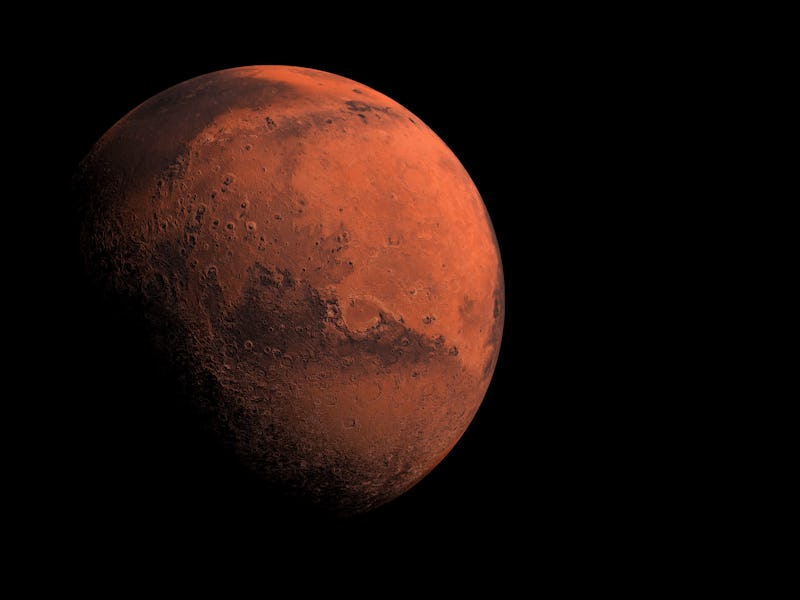No, the Curiosity rover didn’t find gem opals — but it may have found something more important
Groundwater once flowed on Mars through underground passageways, which may have been environments friendly to life.

In a new study, scientists studied “halos” on Mars — but the treasure inside isn’t quite what you’ve heard.
These sections of bedrock are brighter-colored and lighter-toned than the rest. They also run along the sides of fractures, old grooves where liquid water flowed on Mars. Through the passage of time and erosion, what was under the surface is now exposed. The findings made headlines, which often incorrectly suggested the team found the gem opal on Mars.
Travis Gabriel, study lead author and a scientist at the U.S. Geological Survey Astrogeology Science Center, tells Inverse that there’s no interplanetary jewel associated with the halos. “We are not suggesting that we have found gem opal, the colorful stones that are commonly formed into jewelry,” Gabriel says. “Hydrated amorphous silica takes on many forms to the eye, and it is often far less appealing than what you can find in the jewelry shop!”
But the work is nevertheless intriguing. These halos suggest that Martian groundwater was once prevalent.
The white dashes annotate the halos. These light-toned areas of bedrock are found around Martian fractures, which were once subsurface networks of water that may have been a better place for ancient Mars life to exists when compared to the planet’s surface.
When NASA’s Mars Curiosity rover drove over one of these halos as it toured a large impact basin called Gale Crater, the chance encounter allowed scientists to get more information about how water once flowed on Mars. They detail their findings in a new paper, published December 19, 2022, in JGR Planets.
Their color comes from former proximity to water. “Just like beach sand on Earth, when silica is the dominant material, the sand has a very light tone coloration,” Gabriel says.
The halos contain water; it is present in the mineral structure (though there is no water ice or liquid water itself in the halos). Halos surround the ground fractures. They gained their light color through the chemical processes that occurred in that water as it flowed through these once-underground passageways. “The water depleted metals, like iron, from the rock and left behind silica. This silica-rich zone around the fractures is lighter toned as a byproduct of the process,” Gabriel says.
Groundwater movement through these subsurface fractures may have been common. In the new paper, researchers studied a halo unit called “Stimson.” It’s much younger than “Bradbury,” another known halo unit. “The discovery of halos in multiple units of different ages suggests groundwater movement through subsurface fractures was pervasive” and implies a “vast network” of underground pathways for liquid water, NASA planetary scientist and study author Elizabeth Rampe tells Inverse.
Curiosity has traversed three units which all have different ages, Gabriel says. “By looking at archival data, we found that halos were present in all three of the units, separated by great distances. This demonstrates that the water-rich conditions that formed the halos were likely widely spread, including the vast unexplored areas of Gale Crater and elsewhere on Mars.”
According to a December 2022 announcement from Arizona State University, where Gabriel was once a postdoctoral fellow, “recent work finds that these widespread halo networks served as one of the last, if not the last, water-rich environments in a modern era of Gale Crater.”
If life ever existed on Mars, these underground waterways would have been a more habitable condition than the Red Planet’s “harsh” surface, according to ASU.
But when it flowed is still a mystery. “The timing of the groundwater is unknown,” Rampe says. These may be the purview of future work from Mars.
This article was originally published on